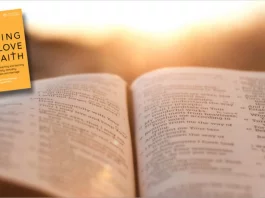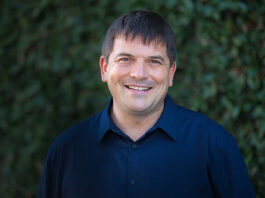For those who don’t have the time or the inclination to read the latest document and the latest motion arising from Living in Love and Faith, which come to Synod in July – both in the 31-pages of GS2358 – here’s my summary and some initial thoughts. Let me say at the outset that I note that both CEEC and the Church Society have come out against GS2358. No surprises there? Well, I had thought that the basic suggestion – delegating some episcopal roles to bishops seen as ‘sound’ – was landing quite well in the conservative evangelical constituency, but of course there are still some who want a complete ‘firewall’ between progressives and conservatives. Conservatives have not moved away from the ‘same-sex relationships, whether committed and faithful or not, are sin and we can’t bless sin’ approach; while we hear a lot at the moment about a change in ‘tone’, that could simply be because some things aren’t being said in the public domain. Interestingly, CEEC are also unhappy because there is no guarantee that the proposed system will be used ‘indefinitely’. They want something ‘permanent’, so GS2358’s message about what is being called ‘a period of discernment’ isn’t going to wash with them.
So, the detail. The latest document is subtitled ‘moving forward as one church’. That suggests that the bishops have ‘heard’ those of us who don’t want to split the church, and who reject the CEEC proposal for two churches separate in everything (except electing people to General Synod, belonging to the pension scheme and having access to church funding). There are some good words: ‘proportionate’ (which sounds right to those of us who see what’s proposed as very tiny indeed, but will be heard differently by those who think this is the end of Christianity in the Church of England); ‘symmetrical’ (an acknowledgement that those progressives in dioceses which are very conservative also have theological convictions which should be respected). There is acknowledgement that Synod has already voted in favour of change; this is ‘building on previous work and decisions taken by the General Synod and the House of Bishops’. Yes indeed, after all the hours of debate of the last few years, we did, indeed, make decisions. I am even more relieved not to be on any of the Working Groups. Their work, the document says, will continue, with extra bishops added in.
The motion being brought in July is all about ‘testing the mind of Synod’ as to whether the approach outlined – and it is only ‘outlined’, with many repetitions of how it needs more work – could ‘enable the implementation of LLF’ (p.4). Odd phrasing, that, without it being clear what ‘LLF’ means here; the book, the resources, the survey on how these were used in parishes, the subsequent motions in General Synod? The document hopes that this can be done in such a way that the chance of a legal challenge under the Ecclesiastical Jurisdiction Measure 1963 (pp.9-10) is reduced. Let me just say there, come on, people, you know someone will feel they have to do this, whatever you do to reduce the chances. The proposals ‘will require constructive and wide engagement as they are developed in detail’ through ‘ongoing engagement and consultation’; there’s ‘a lot of detail still to be worked through’ (p.2).
So what is actually envisaged? Standalone services for Prayers of Love and Faith, with a period of ‘discernment’ for three years (or, depending which bit of the document you read, for ‘at least three years’ (p.6)). During this period there would be annual monitoring of who is using them. That’s not the end of ‘discernment’; there’s a mention of the ‘initial discernment period and beyond’. Diocesan synods are also to be consulted, probably twice, between now and July 2025 (p.14). Those PCCs and priests who want to use the standalone PLF would have to give a theological rationale for their position. It looks like the incumbent decides, but we’ve been told before that good practice would be for the PCC to vote as well.
In the same period of ‘discernment’, there would be ’specific and defined delegation of episcopal ministry’ in which both sides can ask for a bishop ‘whose ministry in conscience [they] are able to receive’. And there’s some attempt to think about ‘a nationally led regional model’ (p.7) here, rather than a postcode lottery. But is this episcopal ministry ‘extended’ or ‘delegated’? And what do those words really mean, outside Church-speak? We have ‘specific and defined delegation’ (p.2), ‘extended (delegated) episcopal ministry’ (p.6), ’symmetrical extended episcopal ministry’ and’ extended (delegated) episcopal ministry’ alongside ‘shared/extended episcopal ministry’ (p.18). What is important here, though, is that the ministry remains legally with the diocesan bishop; no flying bishops (as with women’s ministry) here. Like those wanting to use the PLF, those wanting ‘pastoral provision’ from a different bishop would also have to give a rationale, and applications for this provision would be monitored. I am sure that templates will be produced so that nobody actually has to write an essay on ‘why this parish isn’t happy with our confirmation candidates being confirmed by that bishop’.
There is also a proposed Independent Review Panel for those who don’t find all this works. I’m not sure what the running total is for just how much LLF has cost, but it’s proposed that the members of the Review Panel will be paid (unlike the 2014 Declaration Independent Reviewer at present; p.21). There will be an Interim panel first, because the envisaged Independent Panel may need to be set up with legislation – a Canon or a Measure – meaning that it can’t be set up until July 2026 at the earliest (p.21).
And that’s not all. Faith and Order Commission is to be asked to do more work ‘on the nature of doctrine’ (‘How it changes or develops’, p.5). This is because, the document suggests on p.10, while LLF started out as being about sexual ethics, then shifted to be about ecclesiology or liturgy, but is now about how we change doctrine and whether one doctrine (marriage) can be interpreted differently within the church. Well, we manage to interpret doctrine differently in other areas, so that sounds fair enough. How long for this FAOC work to be completed? That’s not clear. We were told at an earlier meeting that four FAOC documents will be arriving a couple of days before the July Synod, so there’s something else to add to the mix.
Read it all in sharedconversations



